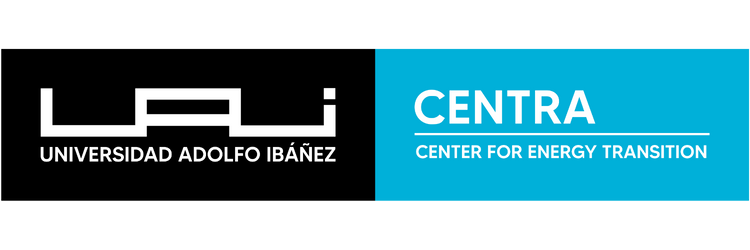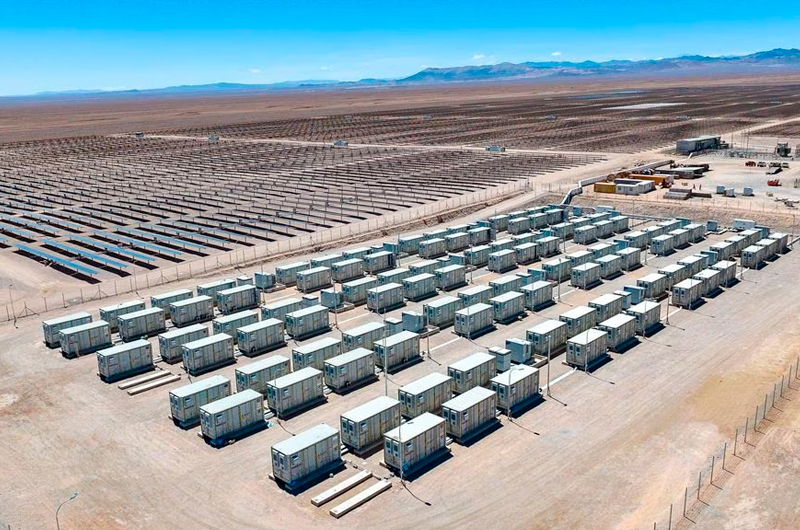The boom in energy storage projects in the area
March 17, 2025
Chile is experiencing remarkable growth in energy storage projects, mainly through BESS (lithium-ion battery) systems, both in operation and at various stages of development.
As of the end of January 2025, according to data from the Ministry of Energy, the total net installed capacity reached 886 MW/3,318 MWh, distributed across 21 projects, mainly concentrated in the Antofagasta Region. These projects include both stand-alone systems and those associated with generation plants, typically photovoltaic or wind power.
Including initiatives under construction, testing, and operation, the total capacity rises to 2,176 MW/8,519 MWh. Additionally, 32 stand-alone systems have been registered with the Environmental Impact Assessment Service (SEIA), representing an investment of $5.56 billion USD and contributing 5,437 MW/27,266 MWh of capacity.
Projects in the SEIA
In the Coquimbo Region, there are still no operational projects, although the Punta Sierra pilot BESS in Ovalle is in the testing phase, with a capacity of 3 MW/6 MWh (2 hours of storage).
Additionally, the BESS Las Cañas project has been submitted for SEIA evaluation, planning a capacity of 400 MW/1,600 MWh (4 hours of storage) with an estimated investment of $300 million USD.
Also under approval is the Halcón Transmission Line and BESS Power Plant project, which includes a 133 MW/805 MWh BESS (6 hours of storage) and will be located in the Vicuña municipality.
Another significant initiative comes from BESS Huañil SpA, which is developing the BESS Huañil Energy Storage Plant Project in Choapa Province, Salamanca Municipality. The project consists of a lithium-ion battery storage system (BESS) with a capacity of 200 MW for up to 5 hours.
Additionally, the project includes the construction of supporting infrastructure, including a 33/220 kV step-up substation (SE) with a 200 MVA capacity (Huañil Substation) and a 2.47 km double-circuit high-voltage transmission line with a voltage of 220 kV, connecting SE Centella to the National Electric System.
Security and Stability
In this context, Energy Minister Diego Pardow stated that energy storage is one of the most dynamic sectors in recent years, as it is an emerging technology with a previously low base of comparison.
The incorporation of storage into the national electric system is driven by two factors: the decreasing international costs of these technologies and the significant opportunities Chile has for producing and storing clean energy.
Pardow emphasized that in a country like Chile, where solar energy is the cheapest and any other nighttime energy source is more expensive, storage helps bridge the gap between day and night. “This is very beneficial because it provides flexibility to the system and also helps lower average prices,” he noted.
The minister added: “Storage plays a crucial role in the energy transition by reducing average prices and narrowing the gap between peak highs and lows. Additionally, it plays a key role in security. This is known as grid-strengthening technology. We are pioneers in adopting it, but it is an opportunity we share with other countries, such as Australia, California, and Texas in the United States, which are moving forward decisively. This results in more competitive prices and, at the industrial level, brings daily benefits as well as security and stability in supply.”
High Potential in the Region
A similar perspective is shared by Bernardo Severino, a researcher at the Energy Transition Center (CENTRA) of the Faculty of Engineering and Sciences at UAI, who explains that the Coquimbo Region has high potential for renewable energy, particularly solar and wind, with a combined installed capacity of 1,321 MW.
Severino highlights that at certain times, this production may exceed local demand, generating energy surpluses that can be utilized later during critical hours through appropriate storage systems.
Additionally, its strategic location—between the main generation centers in the north and the highest consumption areas—facilitates the evacuation and distribution of energy nationwide.
“The region has a well-established electrical infrastructure and experience with renewable energy projects, which supports the connection and operation of new storage systems without requiring large additional network investments. These conditions make Coquimbo an attractive area for the development of storage initiatives that contribute to the stability and flexibility of the national electric system,” said the researcher.
Severino also highlights that BESS systems are modular and can be installed alongside existing infrastructure, allowing for storage integration without requiring major additional investments.
“Furthermore, implementing BESS improves the use of current infrastructure and, in some cases, postpones the need for transmission expansion. This enhances the power system’s ability to respond to the variability of renewable energy sources, contributing to a gradual and cost-effective modernization of the National Electric System,” Severino added.
A Key Pillar in the Energy Transition
Energy storage is emerging as a fundamental pillar in Chile’s energy transition, allowing for the optimal use of intermittent renewable generation sources such as solar and wind.
Severino points out that as these sources become more prevalent, challenges such as energy curtailment and transmission bottlenecks have become evident. In 2024, curtailment reached 5,909 GWh (+121.6% compared to the previous year).
By storing excess energy during periods of high production and releasing it when generation is lower, this technology helps increase renewable energy penetration. Additionally, storage systems play a strategic role by providing fast-response services and frequency regulation, ensuring grid stability in case of contingencies.
“While battery storage systems (BESS) have gained significant relevance due to their rapid implementation and modularity, they are not the only solution. In the long-term energy transition, long-duration storage is becoming increasingly important, with pumped storage emerging as the predominant technology. This system uses excess energy to pump water to elevated reservoirs and then generates electricity by releasing it, making it essential for covering prolonged periods of low renewable generation,” said the researcher.
In this regard, Severino also highlighted that Chilean authorities have simplified and updated regulations to promote the development of energy storage systems.
“With Law 20.936 (2016) and Law 21.505 (2022), these systems are now legally recognized, allowing them to inject energy into the grid and participate in the electricity market, both in projects linked to renewable plants and in stand-alone systems. Additionally, regulatory changes have introduced compensation for capacity and other services, improving project profitability,” Severino concluded.

